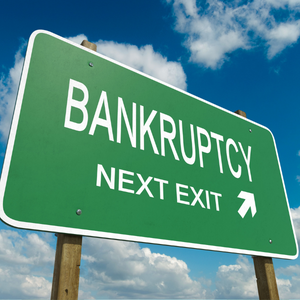
While it’s true that negative information can stay on your credit report for up to 10 years, you don’t have to live with bad credit forever. Which is good news if you’re part of the 20% of Canadians with a score below 600. In fact, you don’t even have to wait a decade to begin to rebuild your credit. You can get on the path to good credit today by deciding to commit to improving your score. From there, how long it will take you to work your way up from Very Poor to Poor to Average to Good all depends on the severity of your past financial difficulties and how greatly you let them impact your credit score.
That said, rebuilding your credit will not happen overnight. The process could take several months, to a couple of years, of unwavering commitment. What you choose to do during that time, however long it may be, will determine the success of your efforts. To put bad credit behind you once and for all, and as quickly as possible, follow the steps below.
Check Your Credit Report
Before you can fix a problem, you need to get to the root of it. Review your credit report to figure out how you fell so far behind in the first place. For many debtors, the problem is obvious: They spent beyond their means with money they didn’t have. For others, however, the issue is not so clear.
It is not uncommon for credit reports to contain errors that cause undeserved dings to scores. Scan your report for any indications of fraud, accounts that wrongfully went into collections, late payments and other credit-damaging influences. Make a note of each inaccuracy and file a dispute with each credit bureau. Once you resolve those issues, you should see an instant boost in your credit score.
Unfortunately, it’s unlikely that all negative information on your credit score is inaccurate. Once you’ve established that all the other information in your report is accurate, you can begin to correct the mistakes for which you’re responsible.
Pay Off Past Due Bills
For many, this first step is the most difficult, as it involves paying large sums of money you may or may not be able to afford. With each missed payment, the minimum amount due increases by both the regular minimum and the late fee.
For example, say your minimum credit card payment is $25 and the late fee is $11. You missed three payments. You now owe $108 — $75 in missed minimum payments and $33 in late fees. If you struggled to pay $25, you might think it impossible to pay $108. However, paying the total minimum is necessary, as doing so can move your account’s status from “delinquent” to “paid,” which will keep your score from dropping even further.
Build an Emergency Fund
Once your credit card payments are back to a manageable level, start building an emergency fund. Continue to make the minimum payments on your accounts, but don’t do any more than that until you have at least one month’s worth of income stashed away. Once you’ve accomplished that, increase your payments by $5 to $10 until you stash away several months’ worth of pay. The goal is to have enough saved for one year before you can really buckle down and focus on rebuilding your credit.
Improve Your Credit Utilization Rate
You can do this in one of two ways — decrease your balances and apply for new credit. The ideal credit utilization rate is 20% or lower, though achieving a 30% rate is a good start. If you have substantial debt, begin by paying as much down in any given month as possible. Take the money you would have spent toward, say, coffee or Friday night pizza and put it toward one or more debts. As your balances diminish, you should see an improvement in your credit score. This will make it easier to apply and receive approval for additional credit, which will further improve your utilization rate.
Use All Future Credit Responsibly
Though credit is the source of your troubles, it’s also the key to your recovery. You need credit to improve your score, but that doesn’t mean you need to rely on it. Before using a new credit card, make sure you have the funds to cover a charge. If you don’t, don’t buy the item. Avoid maxing out your cards, as this will hurt your credit utilization rate, and pay off balances in full and on time each month. By following this advice, you will see gradual improvements to help rebuild your credit.
Be Patient
You can’t rebuild your credit overnight. The process may take months, or even years, depending on how bad your situation is. However, by committing to repair the damage and buckling down until the storm is over, you will be out of the bad credit woods quicker than you could have imagined. If high-interest rates, monthly maintenance fees and late payments are making it difficult for you to get ahead, look into taking out a loan to consolidate your debt to make it more manageable.



